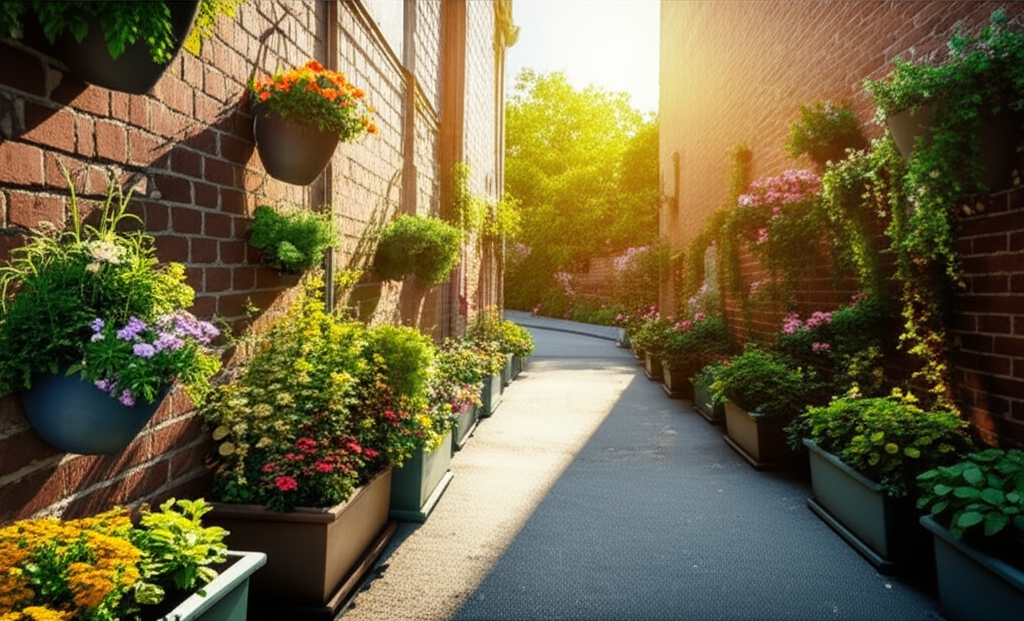From Neglected Alleys to Pollinator Havens: A Look at Urban Greening Initiatives
Local communities are transforming underutilized urban spaces into vibrant ecosystems, fostering biodiversity and community engagement.
Urban environments, often characterized by concrete and limited green space, are seeing a resurgence of biodiversity thanks to innovative community-led projects. In areas that were once neglected alleys and forgotten corners, a growing movement is planting nectar-rich flowers and creating habitats designed to support vital pollinators like bees, hoverflies, and ladybirds. These initiatives aim to not only enhance the aesthetic appeal of urban areas but also to bolster local ecosystems and foster a deeper connection between residents and their environment.
The “Pollinator Pathways” Concept
One such project, observed in Bristol, UK, illustrates this trend. What was described as a “dreary, litter-strewn dumping ground” has, over approximately a year, been transformed into a vibrant corridor teeming with insect life. The transformation involved planting a variety of nectar-rich flora, including species such as catmint, yarrow, geraniums, and anemones. The initiative also incorporated features like “bee hotels” – structures providing nesting sites for solitary bees – and the addition of colourful murals to enhance the visual appeal of the transformed space.
Community Engagement as a Driving Force
A key element of these urban greening efforts appears to be strong community involvement. Reports indicate that local residents have actively participated in the transformation process, with some individuals taking it upon themselves to water the newly planted flora. This suggests a high level of local buy-in and a sense of collective ownership over the revitalized spaces. The ongoing maintenance by these same residents highlights the potential for sustainable, community-driven environmental improvements within urban settings.
Ecological Benefits and Urban Biodiversity
The primary ecological goal of these “pollinator pathways” is to create a network of connected green spaces that support pollinator populations. As urban development often fragments natural habitats, these corridors can provide essential food sources and shelter, contributing to the overall health of urban biodiversity. The presence of diverse insect species, including bumblebees and hoverflies, signals the success of these efforts in creating viable habitats within the city.
Broader Implications for Urban Planning
The success of initiatives like the Bristol pollinator pathway suggests a potential model for urban planning that prioritizes ecological restoration and community well-being. By repurposing underutilized or neglected urban areas, cities can create multifunctional green spaces that offer both environmental and social benefits. This approach can contribute to a more sustainable and resilient urban fabric, enhancing the quality of life for residents and supporting essential ecological processes.
Potential Challenges and Considerations
While these projects offer significant benefits, several factors warrant consideration. The long-term sustainability of such initiatives depends on continued community engagement and potentially on support from local authorities. Securing funding for initial planting and ongoing maintenance can be a challenge. Furthermore, the selection of plant species needs to be carefully managed to ensure they are suitable for the local climate and soil conditions, and to avoid the introduction of invasive species.
The focus on specific plant species like catmint, yarrow, geraniums, and anemones indicates a deliberate effort to provide a consistent food source for pollinators throughout their active seasons. The inclusion of bee hotels addresses the critical need for nesting sites, particularly for solitary bee species, which are important pollinators but often lack suitable habitats in urban environments.
The visual improvements, such as the addition of murals, also play a role in community acceptance and pride. When neglected spaces are transformed into aesthetically pleasing areas, it can foster a greater sense of place and encourage further positive engagement from residents. The direct involvement of neighbours in watering the plants, as noted, is a strong indicator of the positive social impact these projects can have.
Looking Ahead: Scaling Up Urban Greening
As more cities look for ways to enhance their green infrastructure and engage their communities, projects like the pollinator pathways offer a replicable model. The emphasis on utilizing existing, often overlooked, urban spaces such as alleys makes this approach particularly cost-effective and practical. The challenge will be to scale these efforts and integrate them into broader urban planning strategies, potentially through partnerships between community groups, local government, and environmental organizations.
The success of these community-driven greening efforts underscores the capacity of local residents to contribute meaningfully to environmental stewardship. By transforming simple alleyways into thriving insect havens, these projects demonstrate a tangible way to support biodiversity and create more vibrant, connected urban communities.
Key Takeaways:
- Community-led projects are transforming neglected urban spaces, such as alleys, into thriving habitats for pollinators.
- These initiatives focus on planting nectar-rich flora and providing nesting sites like “bee hotels.”
- Strong community involvement is crucial for the success and sustainability of these urban greening efforts.
- The projects offer ecological benefits by supporting biodiversity and enhancing urban ecosystems.
- The concept presents a replicable model for urban planning, prioritizing environmental restoration and community engagement.
Call to Action:
Residents interested in similar urban greening initiatives in their own communities are encouraged to research local environmental groups and urban gardening projects. Exploring resources on pollinator-friendly planting and community engagement strategies can provide a valuable starting point for initiating or supporting such efforts.


























